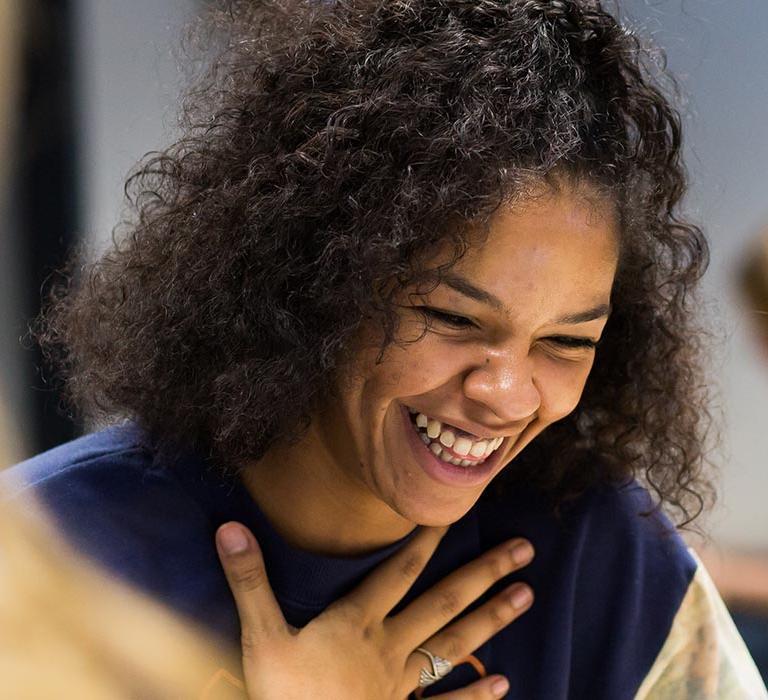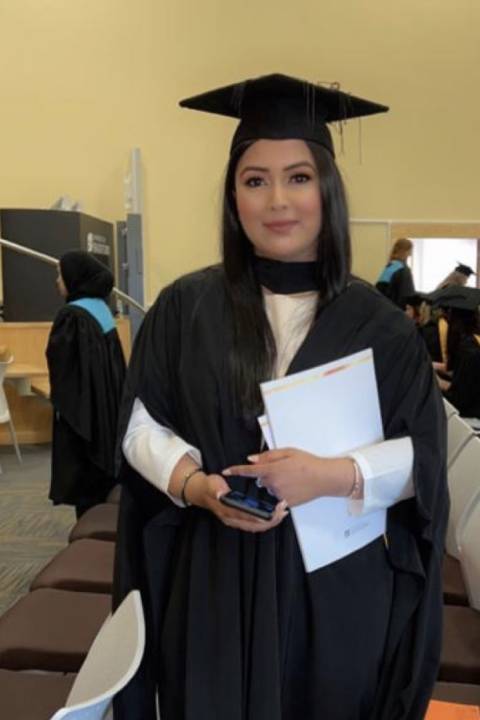Where Radiography can take you
- By:
- Eleena
- Published
Eleena studied BSc (Hons) Diagnostic Radiography at the University of Bradford. She shares details of the journey that took her from undergraduate study to her current career in MRI radiography.

Hey everyone! My name is Eleena, and I'm a 23-year-old magnetic resonance imaging (MRI) radiographer.
Originally from Sheffield, I decided to pursue my studies at the University of Bradford and graduated in the summer of 2022. Since then, I've been working in the radiography field, transitioning from plain film X-ray to MRI.
My path to radiography
I've always been fond of working in the medical field, but I wasn't sure exactly what I wanted to become. During college, I spoke to my teachers about my interests and potential career paths.
Their guidance helped me discover radiography and I realised that being part of a diagnostic team was exactly what I wanted to do. The blend of technology and patient care in radiography appealed to me, and I decided to pursue this path.
Why the University of Bradford?
Up until university I had studied in Sheffield. So, why Bradford? I aimed to enrol in a top-tier university, and opted for the University of Bradford upon learning about its exceptional reputation in radiography.

My experience at Bradford was amazing. The staff were so supportive in both the clinical and academic aspects. Having gained clinical experience in radiography meant that my career pathway was made much easier. After completing my Radiography degree, I was offered a job at the Bradford Royal Infirmary Hospital.
Day-to-day life as a radiographer
My day as an MRI radiographer starts at 7:30am. I begin by turning on the scanner and preparing the room to ensure it’s clean and ready for the first patient. We conduct an ID check when the patient arrives and proceed with a safety questionnaire that includes healthcare checks and an assessment of physical belongings.
Because MRI scanners are powerful magnets, it’s crucial for patients to remove all items from their pockets to ensure safety. For instance, if a patient has had an injury involving metal fragments entering the body, we would not proceed with the scan until an X-ray or other examinations confirm it is safe to do so.

My workday typically ends at 8pm, encompassing three 12-hour shifts each week. This schedule allows me to enjoy four days off, providing a great work-life balance. This is a glimpse into my day-to-day life as a radiographer.
I find immense satisfaction in helping patients by providing critical diagnostic services through radiographic imaging. I have the privilege of working closely with people every day, guiding them through the MRI process and ensuring they feel comfortable and informed.
The detailed images I capture play a vital role in their healthcare journey, aiding doctors in making accurate diagnoses and developing effective treatment plans. Despite the demanding nature of the job, the opportunity to make a positive impact on patients' lives makes it incredibly rewarding. Knowing that my work contributes to their well-being and peace of mind brings me a deep sense of fulfilment.
Future goals
My future goals now are to become the best in my field and eventually become a practise educator or be a part of management. This is something I look forward to as I keep gaining knowledge and experience in MRI.
I just want to remind everyone that university does get tough and challenging at times, but always remember the team at the University of Bradford are there to help you. Don’t be afraid in asking for it.
Check out BSc (Hons) Diagnostic Radiography to see where it could take you.
